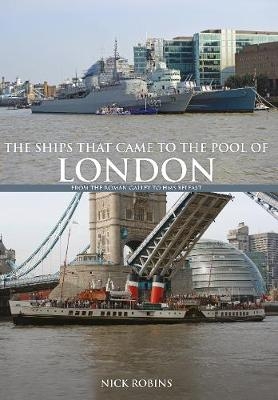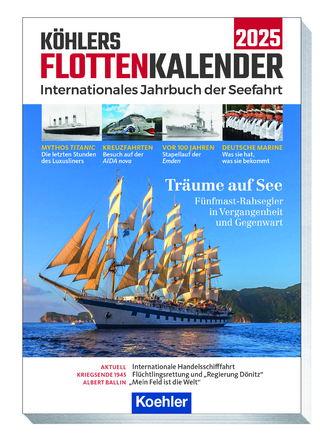
The Ships That Came to the Pool of London
From the Roman Galley to HMS Belfast
Seiten
2017
Amberley Publishing (Verlag)
978-1-4456-6461-3 (ISBN)
Amberley Publishing (Verlag)
978-1-4456-6461-3 (ISBN)
Nick Robins explores the ships that came to the Pool of London throughout history.
The Pool of London has long been a busy place. It has been the focus of seaborne trade with the city since the Roman galleys first arrived with exotic cargoes. After the Industrial Revolution the sailing packets were followed by wooden-hulled paddle steamships in the coasting trades, while the deep sea fleets still relied on both sail and steam. Imposing warehouses were constructed to store goods safe from the weather; several survive to this day, including Butler’s Wharf and Hay’s Wharf on the south bank of the Upper Pool. The Pool developed an important connection with Northern Europe and the near Continent, as ships travelling further afield became larger and migrated to the new dock systems. Barges cluttered up the riverside wharves delivering and collecting goods from up and down river and transhipping goods from the docks.
This is the story of the ships that came to the Pool and, with it, the development of London as a port and an international commercial centre. It is an exciting story, full of colour and bustle that will appeal to many, including the numerous visitors that come to see HMS Belfast.
The Pool of London has long been a busy place. It has been the focus of seaborne trade with the city since the Roman galleys first arrived with exotic cargoes. After the Industrial Revolution the sailing packets were followed by wooden-hulled paddle steamships in the coasting trades, while the deep sea fleets still relied on both sail and steam. Imposing warehouses were constructed to store goods safe from the weather; several survive to this day, including Butler’s Wharf and Hay’s Wharf on the south bank of the Upper Pool. The Pool developed an important connection with Northern Europe and the near Continent, as ships travelling further afield became larger and migrated to the new dock systems. Barges cluttered up the riverside wharves delivering and collecting goods from up and down river and transhipping goods from the docks.
This is the story of the ships that came to the Pool and, with it, the development of London as a port and an international commercial centre. It is an exciting story, full of colour and bustle that will appeal to many, including the numerous visitors that come to see HMS Belfast.
Nick Robins is acknowledged for setting maritime history within the bigger social and political picture. His books describe the evolution of a variety of shipping themes, ranging from tugs and tenders to excursion steamers and even cruise ships, and he has recently published Scotland and the Sea, the Scottish Dimension in Maritime History.
| Erscheinungsdatum | 22.07.2017 |
|---|---|
| Zusatzinfo | 120 Illustrations |
| Verlagsort | Chalford |
| Sprache | englisch |
| Maße | 165 x 234 mm |
| Gewicht | 383 g |
| Themenwelt | Natur / Technik ► Fahrzeuge / Flugzeuge / Schiffe ► Schiffe |
| Geisteswissenschaften ► Geschichte ► Teilgebiete der Geschichte | |
| ISBN-10 | 1-4456-6461-5 / 1445664615 |
| ISBN-13 | 978-1-4456-6461-3 / 9781445664613 |
| Zustand | Neuware |
| Haben Sie eine Frage zum Produkt? |
Mehr entdecken
aus dem Bereich
aus dem Bereich
internationales Jahrbuch der Seefahrt
Buch | Softcover (2024)
Koehler in Maximilian Verlag GmbH & Co. KG
23,95 €


